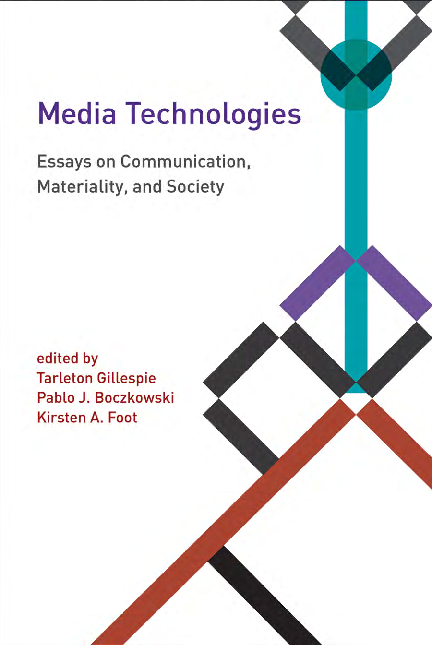
Rethinking Repair (2014) Steven L. Jackson
There is a standard focus in research in media technology on novelty, origins and the early adopters. Steven J. Jackson regards this “productivist bias” as necessarily overlooking the long-term effects of and real fragility of media technologies both in terms of communication and materiality. Specifically, by considering the question of repair in this context he focuses on the processes that enable continued use (in other words the work of maintenance) and the context of the end and collapse of certain media technologies. Repair is, he finds, equally a site of creativity and innovation. Crucially it is not simply another source of productivism, a la Schumpeter’s gale.
Rather, in contrast to the “productivist bias” Jackson forcefully proposes what he calls “broken world thinking” as a radically alternative and provocative way to regard technology. This entails an approach to technology that emphasises ongoing care. Products are not simply birthed to be abandoned to the world for good or ill. Rather a duty of constant repair and attention is routinely required in technologies new and old. This chapter, it is worth noting, is presented in the context of a book that emphasises the materialist/determinist thinking that dominates the discourse on technology and communication.
Jackson’s approach assumes that “erosion, breakdown, and decay, rather than novelty, growth, and progress, as [ought be the] starting points in thinking through the nature, use, and effects of information technology and new media.” If, as seems likely, breakdown is the direction of travel for society then repair (“Broken World Thinking”) is an essential practice to think through.
In practice, this approach entails a foregrounding of caring work, sustainability, and the material and social ends of technologies. The emphasis on the labour of care is a key strength of the text. In Jackson’s words, this entails “a deep wonder and appreciation for the ongoing activities by which stability (such as it is) is maintained, the subtle arts of repair by which rich and robust lives are sustained against the weight of centrifugal odds, and how sociotechnical forms and infrastructures, large and small, get not only broken but restored, one not-so- metaphoric brick at a time.” (p. 222) In short, it requires valuing those things that have been overlooked and undervalued.
From a Critical Theory perspective, a potential criticism of an emphasis on repair in response to “Broken World Thinking” is its potential conservatism. To fix things can easily be co-opted to ‘fix things in place’ thus undermining the radical changes that are required to tackle the ecological crises we face. Where Max Horkheimer (and the Frankfurt School more generally) associates critical inquiry with the task of the physician, who searches for concrete solutions to real problems. (M. Horkheimer, ‘ Notes on Science and the Crisis, ’ in Critical Theory: Selected Essays 1972, 7) Seyla Benhabib, has proposed that “The purpose of critical theory is not crisis management, but crisis diagnosis such as to encourage future transformation.” (Critique, Norm, and Utopia: A Study of the Foundations of Critical Theory, 1986, 226.) As with Jackson, the issue of conservative maintenance (“stability”) of destructive practices must be reckoned with. To his credit Jackson is conscious of this danger of what is “recuperated and reconstituted through repair” (p.223). Following breakdown, the question is as he puts it: “what we do next” (ibid).
Jackon deploys the image Shipbreaking #4, by the photographer Edward Burtynsky to illustrate the act of repair, specifically scavenging and its aestheticizing in the form of a valorised representation. The section entitled Shipbuilding is a well-written and accessible piece to appreciate the concept and practice of repair and how it is a dividing line in knowledge, power and class.
The pandemic is an explicit example of social breakdown, be it in terms of healthcare, childcare, ecological care, social welfare etc. Nuala Morse has reflected on the actuality of repair in the context of museums and the public health restrictions in response to Covid-19. Morse argues that “Broken World Thinking” can be beneficially applied in the museum context in terms of research, policy, and practice. Morse focuses on “creative packs sent to people who were shielding, online sessions for mental health service users, and phone services for isolated older adults, part of a range of efforts to continue connections while buildings were closed.” Following Jackson, Morse finds that acts of repair are “often humble, mundane, and overlooked, yet nonetheless consequential” (p. 7).
Connell Vaughan
TU Dublin
Jackson, S. J. (2014). Rethinking repair. In T. Gillespie, P. J. Boczkowski, & K. A. Foot (Eds.), Media technologies: Essays on communication, materiality, and society (pp. 221–239). MIT Press
